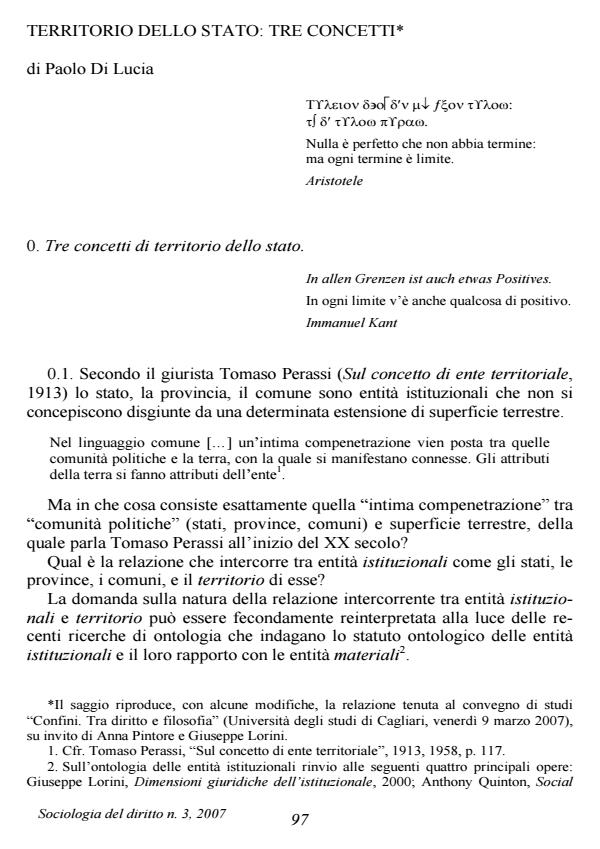Territorio dello stato: tre concetti
Titolo Rivista SOCIOLOGIA DEL DIRITTO
Autori/Curatori Paolo Di Lucia
Anno di pubblicazione 2008 Fascicolo 2007/3
Lingua Italiano Numero pagine 17 P. 97-113 Dimensione file 189 KB
DOI
Il DOI è il codice a barre della proprietà intellettuale: per saperne di più
clicca qui
Qui sotto puoi vedere in anteprima la prima pagina di questo articolo.
Se questo articolo ti interessa, lo puoi acquistare (e scaricare in formato pdf) seguendo le facili indicazioni per acquistare il download credit. Acquista Download Credits per scaricare questo Articolo in formato PDF

FrancoAngeli è membro della Publishers International Linking Association, Inc (PILA)associazione indipendente e non profit per facilitare (attraverso i servizi tecnologici implementati da CrossRef.org) l’accesso degli studiosi ai contenuti digitali nelle pubblicazioni professionali e scientifiche
This paper starts out from a semantic question to investigate the relationship between the state and its territory: what is the meaning (denotatum, Bedeutung) of the phrase ‘state territory’? In order to answer the question, the author explores three concepts of territory: (i) territory as part of the state, (ii) territory as sphere of validity and (iii) territory as figmentum. ‘Figmentum’ is a neologism coined by the author to mean a figment, or entity produced by legal norms. Edoardo Fittipaldi, How Multidisciplinary States of Affairs Acquire Autonomous Status as a Psycho-Legal Phenomenon: The Case of State Borders. In this article, the author propounds a psychological theory for explaining why certain legal entities are treated on a par with real entities. The author’s hypothesis is that this phenomenon is brought about by the fact that the state of affairs (in German: Tatbestand) to which a legal term refers are related to more than one legal consequences and that there is a specific nomen juris for this state of affairs. The author argues that the fulfilment of both these conditions brings about a parity of treatment with that meted out to real entities, which ends up producing the illusion that the legal entities are fully-fledged real entities. After formulating this hypothesis, the author then uses it to analyse the phenomenon of state borders, paying special attention to the influence exerted by the prior natural entities and legal entities existing at the time when the Kosovo conflict broke out.
Paolo Di Lucia, Territorio dello stato: tre concetti in "SOCIOLOGIA DEL DIRITTO " 3/2007, pp 97-113, DOI: